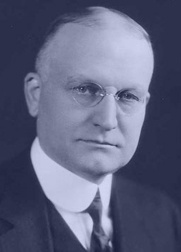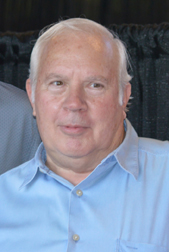Jack Waggoner was just a toddler, when he accidentally locked himself inside the tack room of the horse barn on the farm of his grandfather, Edward A. Deeds, near Dayton Ohio.
“I don’t know how long I was locked up,” Waggoner told me in a 2003 interview. “I was only three and when they found me, I had scratched grooves in the door trying to get out and all of my fingernails were torn off.”

Waggoner thinks the incident might have triggered the asthma attacks he suffered whenever he was near horses. Fortunately for the Western performance world, Waggoner outgrew his allergy to horses and developed a program with a 1988 colt by High Brow Hickory that made Waggoner the all-time leading breeder of cutting horses and High Brow Cat the all-time leading sire of cutting horses.
In 1945, when Waggoner was three, Edward Deeds’ barn was famous not because of horses, but because of horse power. It was there, in 1908, that Deeds’ partner and co-worker Charles Kettering began work on an ignition system that would revolutionize the auto industry.
After Cadillac ordered 8,000 of the new ignition sets, Deeds and Kettering founded Dayton Engineering Laboratories Company (DELCO), and developed the first reliable automobile self-starter, in 1911. At the start of World War I, DELCO expanded to include the Dayton-Wright Company, with Orville Wright and H.E. Talbott. Dayton-Wright manufactured the DeHavilland DH-4, the only American-built bomber to see action in World War I, and the plane in which Orville Wright, who made the first ever manned, powered flight, in 1903, made his last flight, in 1918.

“When they sold Delco to General Motors, they drew straws to see who would stay and run the power (company) for Dayton and who would go to General Motors,” said Waggoner. “My grandfather won and he stayed in Dayton and we all heard of Charlie Kettering because he lost.” Kettering became vice president of General Motors Research Corporation in 1920, a position he held for 27 years.
Born in 1874, in Granville, Ohio, Deeds worked his way through nearby Denison Univsersity and upon graduation, studied the relatively new science of electrical engineering at Cornell, one of the first universities to offer a degree in the field.
By 1899, Deeds was working in Dayton for the National Cash Register Company, where he oversaw the building of that company’s first electrical generating system. He left NCR for two years to design and build the famous Shredded Wheat factory at Niagra Falls, known as the “Palace of Light.”
Deeds returned to NCR in 1902, as a vice president and assistant general manager, and hired young Charles Kettering, an electrical engineer from Ohio State University, to work on his idea for an electric cash register. It proved to be an inspired and enduring relationship, with Deeds as the “idea man” and business mind and Kettering as the inventor and technical genius.
Deeds retired from NCR in 1914. At the time he returned as the company’s president, in 1931, he was serving on the boards of 28 corporations, from the General Sugar Company to one of the most powerful banks in the world. He served as president of NCR until 1940, then as honorary chairman, until his retirement in 1957.
Moraine Farm, Edward and Edith’s sprawling home and site of the famous Deeds barn, was the first private home in the United States to have an airstrip, and the Deeds’ yacht, “The Lotosland,” was the first private boat in the world to carry an amphibious airplane.
Edward Deeds died at Moraine Farm in 1960 and is buried at Woodland Cemetery in Dayton, also the final resting place of Orville and Wilbur Wright, Charles Kettering, and NCR founder John H. Patterson.
